730
Food stamps and cards in the USSR
The essence of the coupon system is that to buy scarce goods is necessary not only to pay the money, but also to convey a special card allowing purchase of this product.
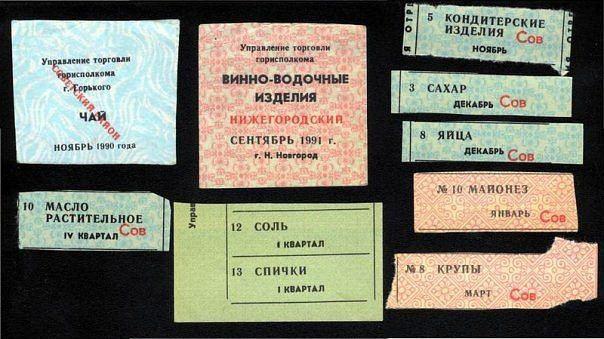
Coupons for food and some consumer goods were produced at the place of residence in the housing department (or dorm - for students), other consumer goods coupons obtained at the place of work (usually the trade union committee).
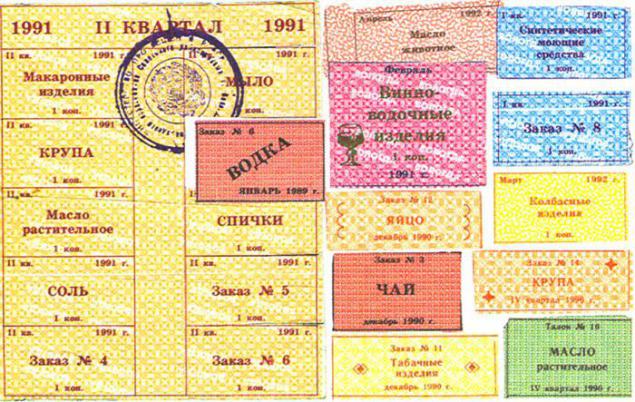
The cause of the coupon system was a shortage of some consumer goods. Original stamps were introduced as an element of motivation. Unlike an employee card issued for the acquisition of scarce goods (for example, TV or women's boots).
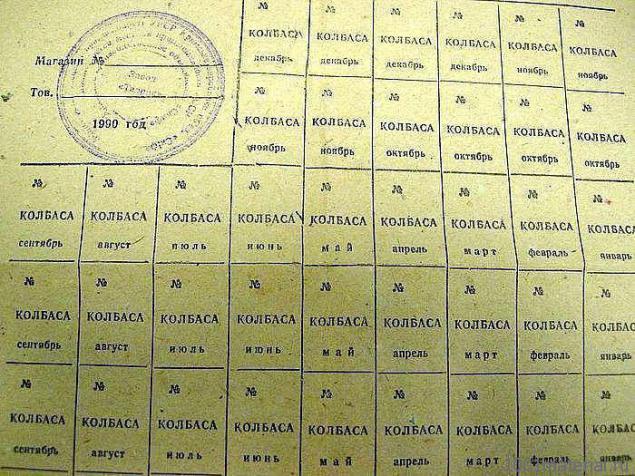
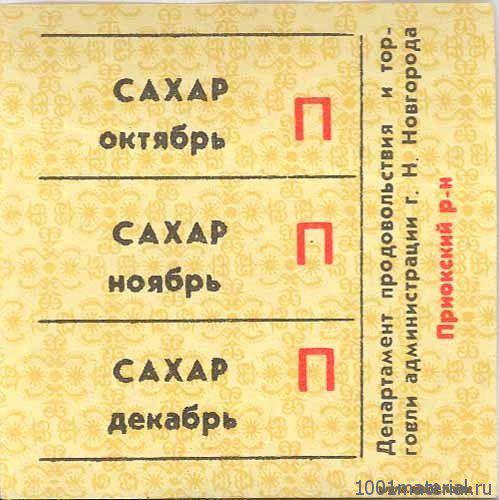
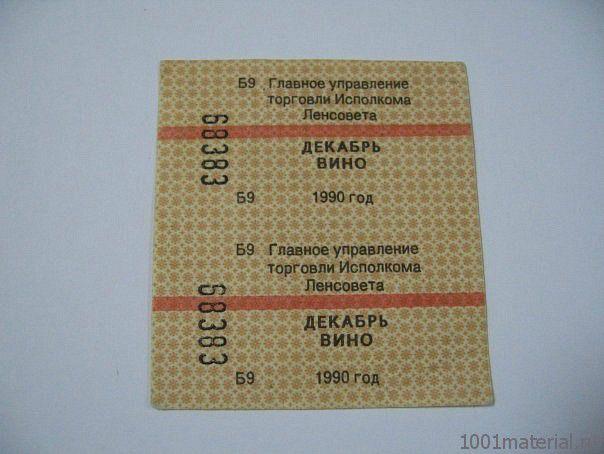
No coupon to purchase this product was difficult since he appeared in stores rarely (sale of vouchers was held, as a rule, with specialized warehouse). Subsequently, however, the coupons were introduced to many food products and some other products (tobacco, vodka, sausage, soap, tea, cereals, salt, sugar, some extremely rare cases, in remote areas, bread, mayonnaise, washing powder lingerie and so on. d.).
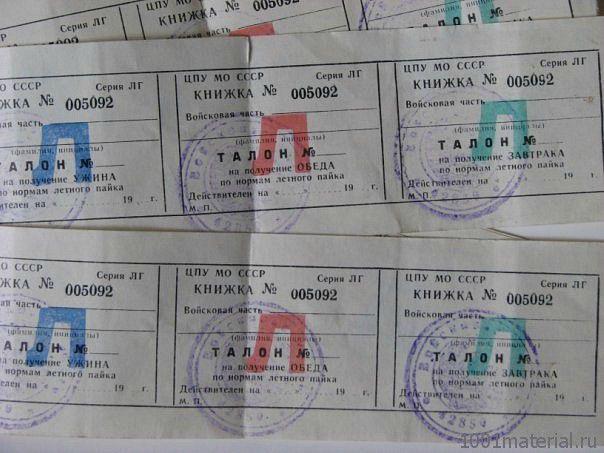

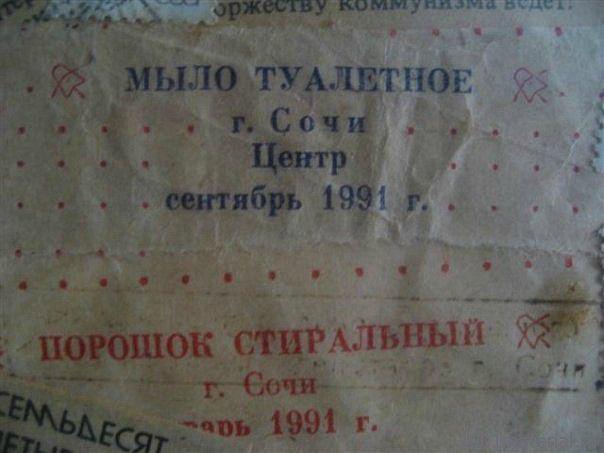
The purpose of introducing vouchers was to provide the population of the minimum guaranteed set of goods. Demand was down, because without appropriate ticket goods in the state trade network did not sell. In practice, sometimes not able to use the vouchers, if the relevant goods in the shops were not.
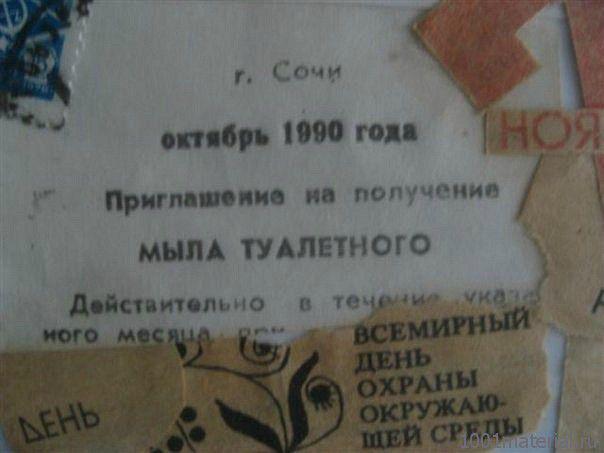
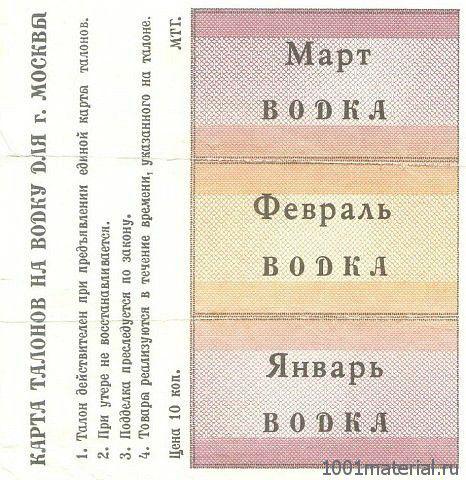
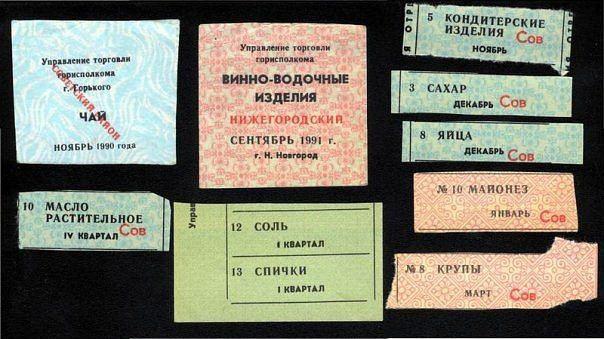
Hide form card (ticket) can be considered the existence of so-called "table of orders", where residents have the proper residence permits and assigned to this table can order at regular intervals and in a limited number to purchase certain goods disappeared from the free sale.

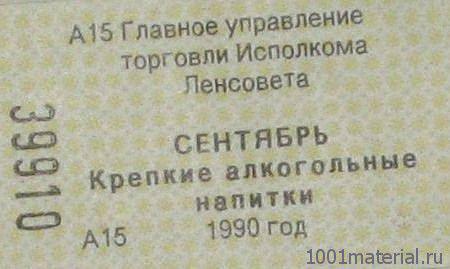

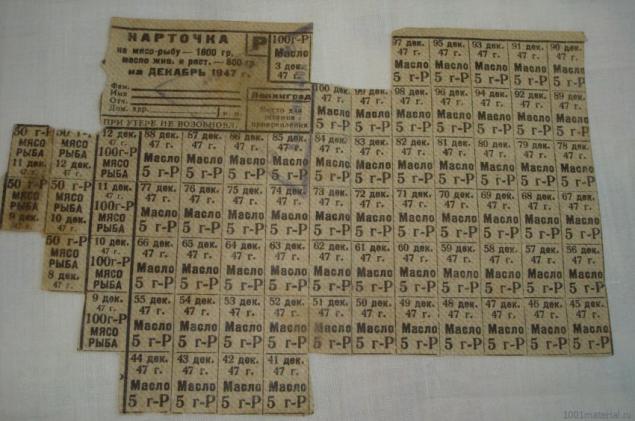
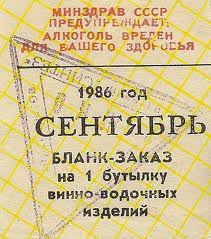
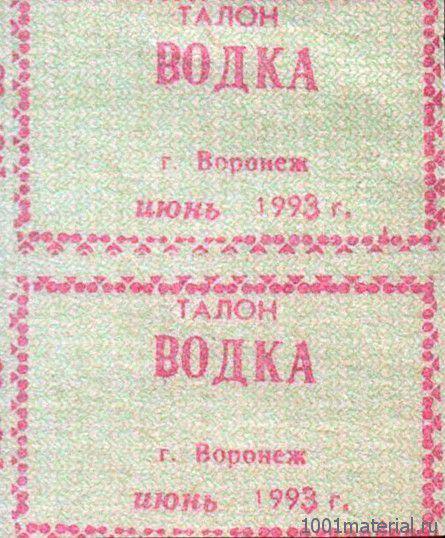
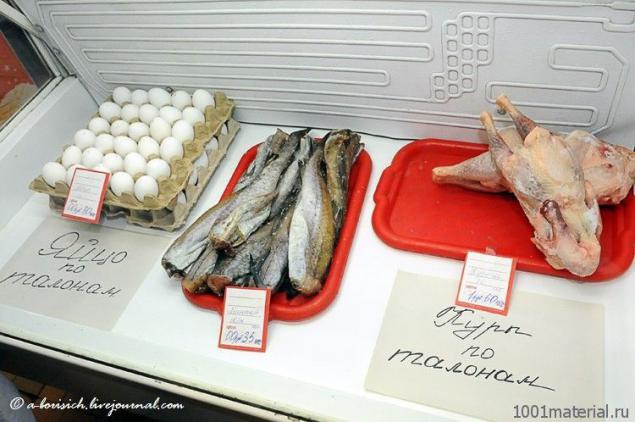
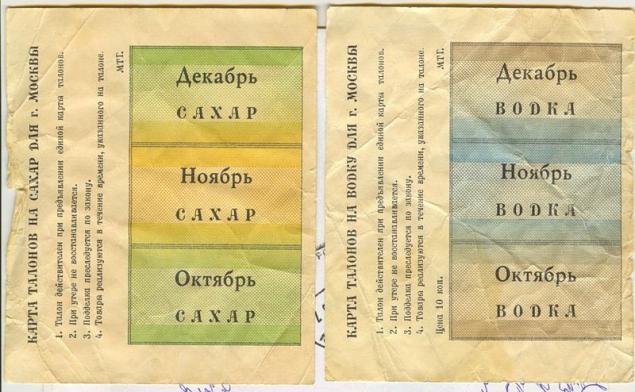
Coupon system came to naught since the beginning of 1992, in connection with the "release" of prices, reducing effective demand, and the proliferation of free trade. On a number of products in certain regions of the coupons were kept longer (Ulyanovsk they were finally abolished only in 1996).
--img20--
Source: 1001material.ru

Coupons for food and some consumer goods were produced at the place of residence in the housing department (or dorm - for students), other consumer goods coupons obtained at the place of work (usually the trade union committee).

The cause of the coupon system was a shortage of some consumer goods. Original stamps were introduced as an element of motivation. Unlike an employee card issued for the acquisition of scarce goods (for example, TV or women's boots).



No coupon to purchase this product was difficult since he appeared in stores rarely (sale of vouchers was held, as a rule, with specialized warehouse). Subsequently, however, the coupons were introduced to many food products and some other products (tobacco, vodka, sausage, soap, tea, cereals, salt, sugar, some extremely rare cases, in remote areas, bread, mayonnaise, washing powder lingerie and so on. d.).



The purpose of introducing vouchers was to provide the population of the minimum guaranteed set of goods. Demand was down, because without appropriate ticket goods in the state trade network did not sell. In practice, sometimes not able to use the vouchers, if the relevant goods in the shops were not.



Hide form card (ticket) can be considered the existence of so-called "table of orders", where residents have the proper residence permits and assigned to this table can order at regular intervals and in a limited number to purchase certain goods disappeared from the free sale.








Coupon system came to naught since the beginning of 1992, in connection with the "release" of prices, reducing effective demand, and the proliferation of free trade. On a number of products in certain regions of the coupons were kept longer (Ulyanovsk they were finally abolished only in 1996).
--img20--
Source: 1001material.ru






















